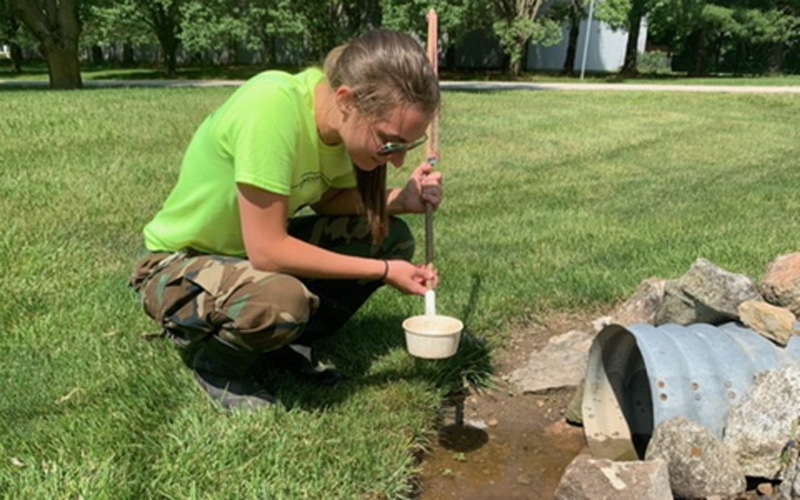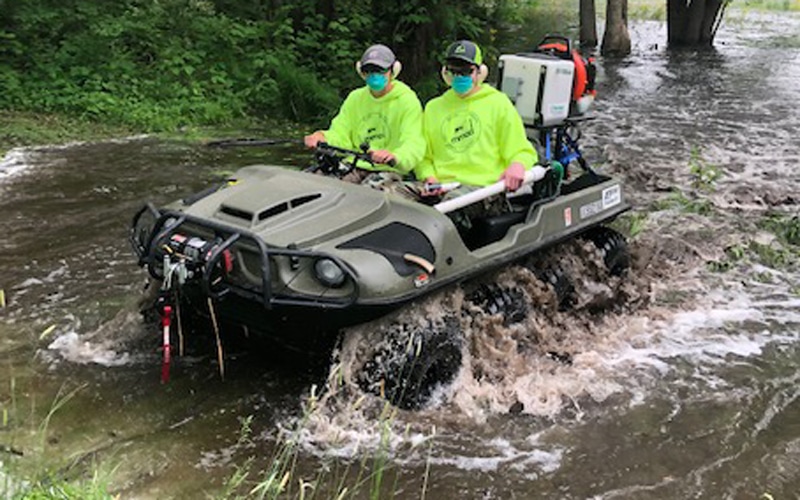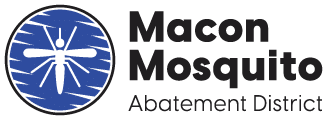Disease Monitoring
Mosquito control starts with surveillance.
In order to make precise and effective treatments, it is critical to understand the mosquito population in our district. We need to know what species are active, where they are active, and what is the level of activity. This information is gathered by our robust surveillance program consisting of 30 mosquito traps of three trap designs placed all throughout the district.
The mosquitoes collected are identified and counted and from that information we get a picture of the activity over the whole district. With over 40 species of mosquitoes in Illinois, often with differing habitat, behavior, and preference for blood meal, the information gathered in our traps is essential to guide our treatments. Organized mosquito control based in surveillance is crucial to how we operate in order to make informed decisions and complete our duties effectively and accurately to protect the community from potential disease risk and nuisance mosquitoes.

Control Efforts
Implementation and real-time data significantly reduce mosquito populations.
MaconMAD implements an Integrated Pest Management program that is environmentally friendly and supported by robust mosquito surveillance research. MMAD uses real-time data to target and reduce mosquito populations through the use of biological control agents and insecticides specifically designed to treat larval and adult stages.
Understanding the life stages of a mosquito is important to selecting which control measure is most appropriate. During larval stages mosquitoes are captive and confined to water sources. In this stage they pose no threat as a potential vector and treatments can be tailored to their habitat. Making treatments at this life stage and in these habitats is a proactive approach which prevents the emergence of biting adult females. MMAD tracks over 800 permanent standing water sources that are known breeding habitats on a weekly basis, conducting treatments as necessary.
In adult stages, targeted treatments are made using a truck mounted ultra-low volume sprayer or ULV. These treatments are generally made as a last resort when virus activity has been discovered within the population or populations are over-abundant, causing a nuisance or biting adults. Our robust surveillance system tracks both virus and population trends throughout our District on a weekly basis, allowing us to make well timed, targeted, coordinated treatments based on sound mosquito surveillance data.

Products We Use
You can find label and safety data sheets (SDS) for the control products we use below.
What We Do
The District is committed to using science based Integrated Pest Management (IPM) practices to monitor vector populations and disease presence through surveillance, targeted product applications and source reduction through inspection and vector education for our residents through community outreach. These components create the foundation of the District’s comprehensive vector control program.
Surveillance
SURVEILLANCE
Larval Control
LARVAL CONTROL
Adult Mosquito Control
ADULT MOSQUITO CONTROL
Contact Us
HOURS
May-September
Mon–Thurs: 9:00am – 5:00pm
Fri: 9:00am – 3:00pm
October-April
Mon–Thurs: 8:00am – 4:00pm
Fri: 8:00am – 2:00pm
LOCATION
4170 N. Bearsdale Rd.
Decatur, IL 62526
PHONE
217-875-2722


